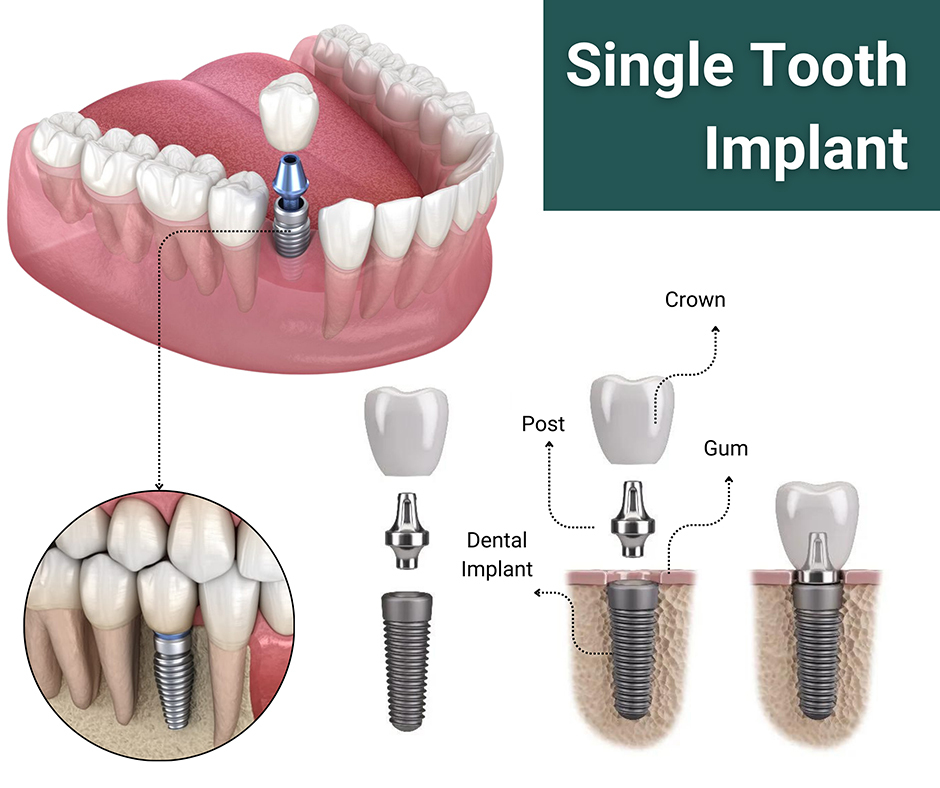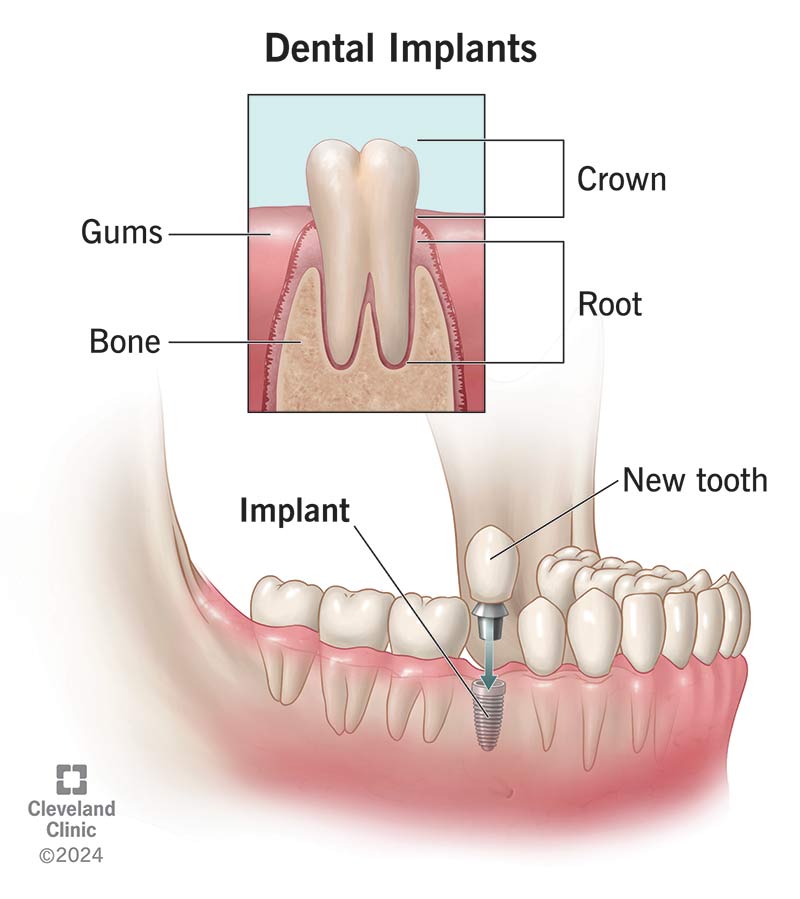The Single Strategy To Use For Dental Implants
Dental Implants Can Be Fun For Everyone
Table of Contents5 Easy Facts About Dental Implants ShownThings about Dental ImplantsHow Dental Implants can Save You Time, Stress, and Money.Some Known Factual Statements About Dental Implants
are medical tools operatively implanted right into the jaw to restore an individual's capability to chew or their appearance. They provide assistance for synthetic (phony) teeth, such as crowns, bridges, or dentures. When a tooth is lost because of injury or disease, a person can experience complications such as rapid bone loss, malfunctioning speech, or modifications to chewing patterns that lead to pain.
Framework of The Dental Implant System picking dental implants, talk to your oral copyright concerning the possible benefits and threats, and whether you are a candidate for the treatment. Things to take into consideration: Your general health is a vital aspect in figuring out whether you are a good prospect for dental implants, the length of time it will certainly take to recover, and how long the dental implant may remain in location.
Smoking might affect the recovery process and reduce the lasting success of the dental implant. The healing process for the implant body might take a number of months or longer, during which time you generally have a short-lived abutment instead of the tooth. the oral implant treatment: Meticulously follow the oral hygiene instructions offered to you by your oral supplier.
How Dental Implants can Save You Time, Stress, and Money.
Implant failure can cause the need for one more procedure to take care of or change the implant system. Restores the ability to chew Brings back cosmetic look Assists keep the jawbone from shrinking due to bone loss Protects the health and wellness of the bordering bone and gum tissues Helps maintain adjacent (nearby) teeth steady Boosts lifestyle Damages to bordering all-natural teeth during implant placement Injury to the surrounding cells during surgical procedure, such as sinus perforation Injury during surgical treatment (as an example, fracture of surrounding jawbone) Inadequate function, such as seeming like the teeth do not bite together usually A sensation that the tooth hangs or turning in position arising from a joint screw loosening up Implant body failure (looseness of the dental implant body) due to systemic infection, which might be more probable in clients with unrestrained diabetes because of neighborhood infection in bone and gums sustaining the implant body because of postponed recovery, which might be more probable in clients who smoke Trouble cleaning up the periodontals around the implant, leading to inadequate oral hygiene Untreated gum disease Post-surgical numbness because of nerve impingement or damages Constantly notify healthcare providers and imaging professionals that you have dental implants prior to any type of magnetic resonance imaging (MRI) or x-ray treatments.
FDA is not knowledgeable about any damaging occasions reported for MRI or x-ray treatments with dental implants. Dental implants systems are generally made from materials that follow global consensus criteria of the International Organization for Standardization (ISO) or ASTM International. These requirements have details of what makes a safe material.
Various other materials such as gold alloys, cobalt-based alloys, titanium alloys, or ceramic products are in some cases made use of. The security profiles of these materials are popular. Dental implant systems are evaluated according to global agreement criteria. Biocompatibility testing, to show that physical call with the tool does not cause difficulties like inflammation or sensitive response, belongs to the assessment that helps ensure the products in the dental implant system are risk-free and do not cause negative impacts when dental implanted in individuals.

Some Known Incorrect Statements About Dental Implants
Some people are not qualified for dental implant surgery. It is for oral cosmetic surgeons to run on people with: intense illnessuncontrollable metabolic diseasebone or soft check over here cells condition or infectionIf these concerns are settled, a person can have the surgical procedure. Dental Implants. In, dental specialists refrain from running on individuals with: If individuals with any of the above content undergo dental implant surgical procedure, there is a higher threat of the dental implant stopping working
Some people have a jawbone problem that protects against adequate bone for a dental implant from establishing. In such instances, a surgeon may need to execute a ridge adjustment. This entails raising the gum to expose the location of flawed bone. The cosmetic surgeon will after that use a bone or bone replacement to repair and develop the location.
Oral implant surgery is a customized process. Provide you time to recover. Attach the message and last crown, bridge or denture.
Next, your doctor will meticulously place the oral implant into your jaw. Your surgeon will certainly rearrange your periodontals and close the incision with stitches (Dental Implants). If your dental implant is near the front of your mouth, your dental practitioner will make a momentary tooth for you to put on till you heal. This way, you will not have a space in your smile while you recover.
Dental Implants Things To Know Before You Buy
Your company can inform you what to anticipate in your scenario. During the recovery stage, your jawbone should fuse to the dental implant. This process, called osseointegration, is essential for stability and long-lasting success. This procedure can take anywhere from 3 to 9 months. Sometimes, it may take longer.
As soon as your dental implant heals, your dentist can affix the abutment (small adapter message) and your last restoration (crown, bridge or denture). This usually takes concerning one hour to complete and might need a 2nd minor surgical read this article procedure. You should not feel any pain throughout your dental implant treatment because your provider will make use of drug to numb your gum tissues.